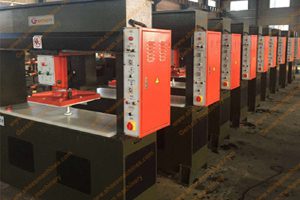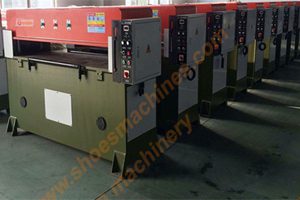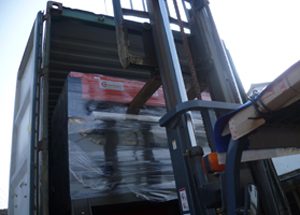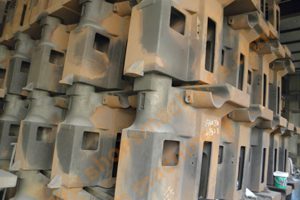More than two hundred years ago, the technological innovation brought about by the industrial revolution greatly enhanced people’s use of the earth’s resources, and the economic and social development they obtained enabled the global population to expand rapidly in a short period of time in order to meet growing demand. The demand for food, future food production needs to be turned on several times on the current basis.
On the one hand, due to the adverse factors such as urbanization and global warming, land resources and crop growth are increasingly restricted, and food production is becoming more and more difficult. On the other hand, the reduction in the number of farmers and the aging of the agricultural population have also made Agricultural development has encountered bottlenecks. The two reasons have made the global food supply and demand conflict unresolved.
Under this situation, it is particularly important to further promote the development of agricultural modernization to a deeper level! At present, with the power of emerging technologies such as artificial intelligence, big data, and the Internet of Things, countries are rushing to promote the agricultural production mode to digitalization, and promote the agricultural production model to be precise and intelligent. Regardless of whether it is “smart agriculture” or “unmanned farm” built on this basis, agricultural robots are well-deserved protagonists!
The status quo of global agricultural robot development
It is reported that the agricultural robot is an automated agricultural machinery equipment with the purpose of completing agricultural production tasks and having four limbs action, information perception and intelligent programming ability. In the face of the bottleneck of agricultural development in the world and the food crisis, the emergence and application of agricultural robots can be said to open a new era of digitalization, precision and intelligence in agricultural development.
Attracted by the strong advantages of agricultural robots, countries have paid special attention to their development in recent years. Since 1984, Japan introduced robots into the field of agricultural engineering for the first time. Follow-up countries such as the United States, Germany, Britain, and France have followed up. Today, planting, transplanting, tilling, picking, harvesting, weeding, sorting, packaging, etc. have been developed. A variety of agricultural robots.
At present, the global sales of agricultural robots have exceeded 10,000 units, and the market scale is close to 2 billion US dollars. The development speed is extremely amazing. On this basis, countries are also accelerating the expansion of sub-sectors. The United States has achieved remarkable results in the field of agricultural monitoring, Australia, the United Kingdom, France in the field of agricultural robot research and development, and Japan in the field of agricultural support.
Relatively speaking, the development of agricultural robots in China is still in its infancy. Since the mid-1990s, I have been investing in R&D. Although many types of robot products have been introduced, they still lag behind advanced countries in terms of R&D level and application. The specific performance is less investment, difficult application, slow development, and technology gap. Great.
However, it is gratifying that the country is increasing its support for the development of agricultural machinery and equipment. China’s agricultural machinery industry is entering an unprecedented period of good development. With the development of agricultural robot technology as the leading condition, the future of China’s agricultural transformation and upgrading is very promising.
Three major problems are constraining China’s development
At present, the gap between China’s development and foreign development is clear at a glance. Under the circumstances that foreign countries have been exploring agricultural peripheral industries and developing “unmanned farms”, the application of China has not yet been resolved. The reason for this is that the start of the day is one side, but more importantly, some problems that have arisen under the unique national conditions of China have not been eradicated.
The effect of starting early and late is mainly reflected in the technology, which in turn affects the price of the product. Due to the large investment in the early stage of research and development, the agricultural robot has high manufacturing costs, and there are still some shortcomings in China’s technology, which in turn leads to high product prices. In addition, due to the seasonal influence of agricultural products, the utilization rate of agricultural robots is also greatly reduced, and the cost of use and the maintenance cost when idle are not low. The superposition of high prices and high costs has discouraged domestic farmers.
The impact of special national conditions is reflected in the land situation and the situation of farmers. In terms of land, China’s topography is changeable, from mountains, plateaus, hills to plains. This puts higher demands on technology and product adaptability. On the farmer side, Chinese farmers are more traditional and conservative, and new technologies and new ones. Acceptance of products and new production methods is slow and solid. The special national conditions of the two aspects have led to the development of agricultural robots in China.
What is the future development trend of technology?
Then, where is the road to the rise of China’s agricultural robots in the future? Through analysis, we can find that the above three major problems are caused by the lack of technology. Therefore, only by improving the technical level can we reduce the R&D cost and lower the price, and then we can adapt to the land adaptation and enhance the acceptance of farmers. The dysentery of industrial development is divided.
The author believes that the focus of future technological development is mainly concentrated in three aspects. One is to improve the environment identification and adaptability to predict and respond to the variability and complexity of the operating environment; the other is to enhance the flexible working ability to cope with various operational problems caused by the object being too delicate; The third is to add high reliability, operational convenience and human-computer interaction, in order to adapt to the increasing aging of the agricultural population, and to increase the recognition of farmers.
All in all, the development of agricultural robot technology is the foundation and key. As long as enterprises, countries and industries pay attention to the research and development and upgrading of technology, the development of agricultural robots in China will eventually mature.





